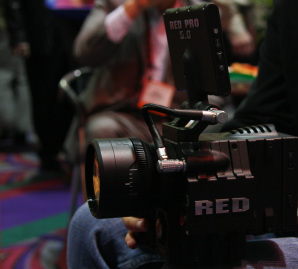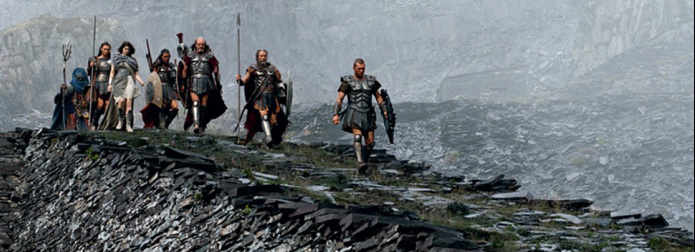While cinema has been around since the early 20th century and has thrived off the Industrial Revolution and the expanding artistic values of our culture, filmmaking was originally restricted and uncontested to a single process, focused around cellophane film reels. There were intense changes to film style and techniques throughout the first century of the medium's existence, namely the inclusion of sound and color, but film was recorded through film reels for decades without change. That grainy watermark on the moving picture was a trademark of cinema, and created a sense of nostalgia for audiences and a pride of an art for the director. Then the Digital Revolution arrived.
Instead of the images being recorded on a roll of film, beautiful pictures were captured through a lens onto a digital chip inside of the camera. The data is then stored in the camera's memory, and is available to be reviewed at anytime. Before, filmmakers were required to wait a full day for the film to be developed, only to be shown the shots the following day. This anticipation and monotony to the whole process of film production was eliminated by the use of the digital platforms and codecs.
Let's get a quick overview of Red, the recent innovator of this digital transformation.

- Red Digital Cinema Camera Company was created by Jim Jannard, the founder of Oakley.
- Red began in 2007 and was highly anticipated by filmmakers.
- The first camera (the Red One) was a huge success due to its full set of features and lightweight capabilities.
- The Red provides specific lenses and displays that are custom built for the cameras.
- The camera has been used to film 3D in films such as Prometheus (Ridley Scott, 2012), and The Hobbit (Peter Jackson, 2012)
point for much of the film.
Although the Red Digital Cinema Camera Company was highly anticipated for the filmmaking and digital worlds, and was projected to be significant for the improvement of digital filmmaking, the process was expedited by famous filmmaker Peter Jackson, who, as a producer for Blomkamp's District 9, pushed him to use the Red One's. Jackson has also used the Red Epic Camera on his most recent project, the highly anticipated The Hobbit (2012, 2013), even shooting the footage at 48 frames per second rather than the typical 24 frames per second. The Red Digital Cinema Camera Company has sparked an innovative revolution for the digital cinematic world, causing people to jumpstart and grow these digital styles.
Other significant films and productions that have used the Red One and/or Epic cameras:
- Antichrist (Lars Von Trier, 2009)
- Sanctuary; the first North American television series to use the Red One exclusively
- Leverage; television series that did not use any traditional film
- Director Steven Soderbergh has shot multiple films, including Che (2008), The Infomant! (2009), Contagion (2011), Haywire (2012), Magic Mike (2012), and Side Effects (2013), using a Red.
- Beginners (Mike Mills, 2010)
- God of Love (Luke Matheny, 2010), an Oscar winning short film
- David Fincher shot both The Social Network (2010) and The Girl with the Dragon Tattoo (2011) on Reds
- Louie; a television series by comedian Louis C.K. that used his own Red One camera
- Justified; a television series that used a Red Epic camera on the third season
- Much Ado About Nothing (Joss Whedon, 2012)
- Upcoming film Transformers: Age of Extinction (Michael Bay, 2014) will be shot on the brand new Red Dragon Digital Camera
It'll be interesting to see how the Red Digital Cinema Camera Company continues to improve and renovate this digital cinematic world. The film industry is being changed by the Digital Revolution, and the Red cameras are at the forefront.


 RSS Feed
RSS Feed
